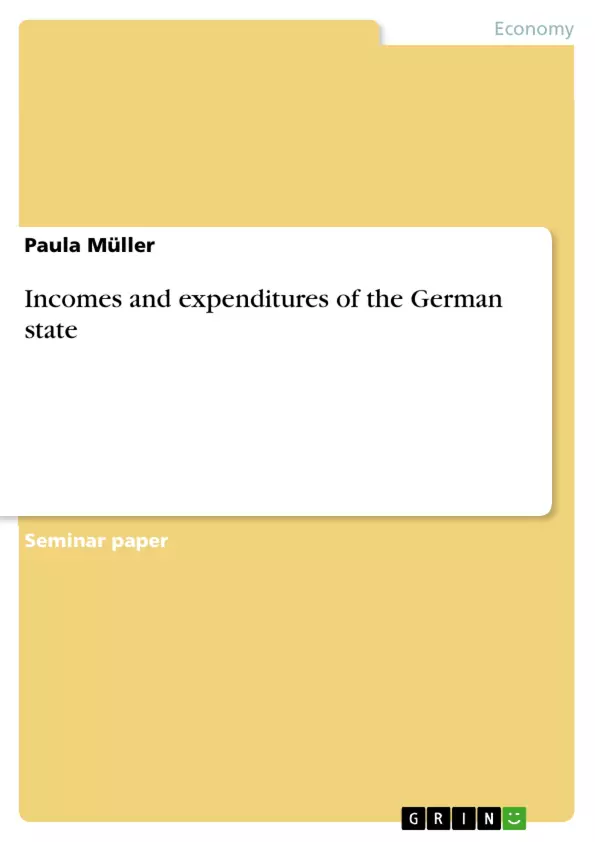This paper is about the financial management of the German state. At first, some general data about Germany are given as an overview, then the financial planning process will be explained, the income and the expenditures of the state are outlined and in the end some forecasted numbers are presented. At some points, special issues which are either German specialties or which are largely discussed and criticized will be explained in particular.
Inhaltsverzeichnis (Table of Contents)
- Analysis of the incomes and expenditures of the German state
- General data
- Financial Planning of the German state
- Law for budget principles
- Federal budget law
- Debt policy as an important determinant for planning
- Federal budget 2014
- Income
- Expenditures
- Forecasts
- Sources
Zielsetzung und Themenschwerpunkte (Objectives and Key Themes)
This paper explores the financial management of the German state, providing an overview of its financial planning process, income and expenditures, and future forecasts. The paper also examines specific German specialties and discusses critical topics regarding financial management.
- Financial planning of the German state
- Analysis of the German state's income and expenditures
- Debt policy and its influence on financial planning
- The legal framework governing financial management in Germany
- Forecasting future financial trends in Germany
Zusammenfassung der Kapitel (Chapter Summaries)
The paper begins with an introduction that provides general data about Germany, including its surface area, population, GDP, unemployment rate, and household income and expenses. It then delves into the financial planning process of the German state, explaining the legal basis for financial planning, which includes the "Law for budget principles" and the "Federal Budget Law."
The "Law for budget principles" sets forth the general goals, principles, and functions of the federal budget plan, emphasizing the principle of economy, efficiency, and effectiveness. This principle requires professional accounting methods and efficient capital planning. The "Federal Budget Law" outlines the process of elaborating and approving the federal budget plan, involving the Ministry of Finances, the Bundestag, and the Bundesrat.
The paper further explores the role of debt policy in financial planning, highlighting the growth of German national debt over recent decades, particularly due to the reunification and the 2008 financial crisis. The introduction of the "debt brake" law in 2009 aims to reduce and eventually eliminate national debt. The paper showcases the projected reduction of debt as a percentage of GDP in the coming years.
Schlüsselwörter (Keywords)
The key focus of this paper is the financial management of the German state. It delves into the legal framework governing financial planning, including the "Law for budget principles" and the "Federal Budget Law." The paper further examines the role of debt policy and its impact on financial planning, highlighting the "debt brake" law and its implications. Other key terms and concepts include income, expenditures, forecasting, and German financial specialties.
- Quote paper
- Paula Müller (Author), 2018, Incomes and expenditures of the German state, Munich, GRIN Verlag, https://www.grin.com/document/450804



